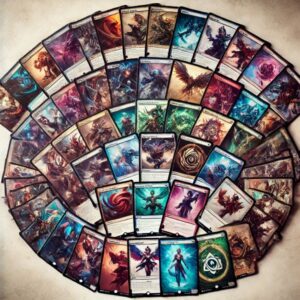
A CCG is a game where players collect, trade, and use cards to build decks for strategic gameplay. Some iconic titles include Magic: The Gathering, Pokémon TCG, and Yu-Gi-Oh!. While initial costs can be high, many games offer budget-friendly or digital formats. Win conditions vary by game, often involving defeating opponents or achieving specific goals. The future includes innovations like AR, digital hybrids, and increased accessibility.
Collectible Card Games (CCGs) are a genre of tabletop games where players collect, trade, and build customized decks of cards to compete against others. Each card represents a game element, such as characters, spells, or resources, offering strategic depth and replayability.
History of CCGs
The CCG phenomenon began in the early 1990s and has since become a global pastime:
- 1993: Magic: The Gathering (MTG) launched as the first-ever CCG, created by Richard Garfield.
- Late 1990s: Games like Pokémon Trading Card Game and Yu-Gi-Oh! expanded the market to younger audiences.
- 2000s: Digital CCGs emerged, including Hearthstone by Blizzard Entertainment[1].
- 2020s: CCGs thrive in both physical and digital formats, with esports tournaments and online communities.